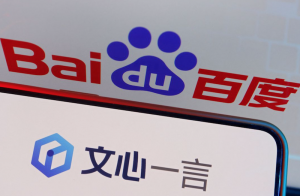The remote working revolution brought on by the Covid-19 pandemic has highlighted how, when enabled by technology, society can make huge changes remarkably quickly. In fact, the pandemic has kickstarted or accelerated digital change across many facets of life, including finance.
One area that will benefit greatly from this shift is trade finance, where various issues have led to an estimated global trade finance gap of US$1.5 trillion and a situation where 45% of SME financing requests are rejected.
In order to see how technology can transform trade finance, first it is useful to understand some of the issues faced by the sector.
Read more: Tesla hails Chinese demand for record deliveries
Following the financial crash of 2008, the requirement for more stringent Know Your Customer (KYC) checks made it more difficult for companies in developing countries to supply the necessary KYC information in the required format.
If banks cannot properly assess the risk in a transaction, the price of that transaction will be higher. For small businesses, which often don’t have the financial history or data to be effectively KYC’d, this has had a disproportionately large effect. With SMEs in APAC making up 98% of companies and employing 50% of the workforce, this is a particular concern.
One of the main procedural problems facing trade finance simply comes down to paperwork. The ICC says a single trade finance transaction can require over 100 pages of documents, and there are an estimated four billion pages of physical, paper documents in circulation at any one time.
The same data points are repeated across multiple documents, and these documents are mostly physical originals when it comes to global trade and trade finance.
CONSISTENCY CRITICAL
When a Letter of Credit is used to mitigate risk of non-payment between buyers and suppliers, consistency is critical not only across the pages in the document set, but also between the document set and the Letter of Credit they are presented under.
It can take up to two days and considerable expertise to check a set of documents, and mistakes can be costly – not only in terms of the fees charged by banks but also from the delay in being able to clear goods at the end destination. It is not uncommon for goods to arrive at their destination before documents clear the banking system, adding additional warehousing, storage and demurrage charges.
Such delays and costs have led to a rise in Open Account financing, where goods are shipped and delivered before payment is due. Without a trusted intermediary to mitigate risk of non-payment, Open Account financing carries more risk for the seller but is more cost-effective and efficient. As a result it now accounts for up to 80% of global trade.
The challenge Open Account trade presents to banks is that they typically only have visibility of the payment between counter-parties, making anti-money laundering checking process more difficult and more expensive, impacting on the trade finance gap.
MACHINE LEARNING
The key to solving all these problems lies with technology. Specifically, the application of artificial Intelligence and machine learning alongside widespread digitalisation of trade processes, documents and data.
Banks can achieve a more complete picture of a trading party if better use can be made of the data that lies unstructured in physical trade documents, and if different data sources can be connected to add context. This increased visibility reduces risk in transactions and allows corporates and banks to secure supply chains by going deeper with financing.
The emergence of blockchain technology and its inherent characteristics, like data immutability and smart contract support, further reduces the need for data duplication and supports process automation.
To prepare for AI adoption, Asia’s businesses need to have a digital mindset and embrace advances such as process automation and cloud-based solutions, to enable the dynamic management, integration and on-going analysis of datasets.
DATA INTEGRATION
They should look at how open APIs and platform-based business models can be leveraged to enable them to seamlessly integrate data from third party sources, giving them greater visibility and risk mitigation capabilities when onboarding new counter-parties and build resilience into their supply chains.
Corporates should also look to rationalise their IT infrastructure – they may be connecting disparate systems through bespoke interfacing today, or using legacy processes, host to host connections or even using spreadsheets. Corporates need to connect these internal data sources and add context through external data sources to support their adoption of AI.
From a bank’s perspective, faster, more predictable and repeatable analysis of datasets, and the ability to connect data sources from inside and outside of their organisation, will allow them to build up a better picture of their corporate client and its business.
CAPITAL ALLOCATION
Through analysis and monitoring of cashflows and accurate forecasting of financing requirements, banks can dynamically manage limits and optimise their capital allocation. Furthermore, a deeper understanding of their corporate client opens up the possibility of more effective targeting of value-add services, while AI based transaction repair instead of traditionally inflexible rules-based approaches can also be supported.
Increasing the level of automation in processing enables banking operations or corporate treasury personnel to manage by exception or focus on value-add tasks. These factors contribute to a reduction in transaction risk and allow banks to lower their cost of financing, helping to lower a current barrier to entry for the SME and MSME sector.
- Michael Walker is Head of Working Capital Finance, Asia Pacific, for Finastra























